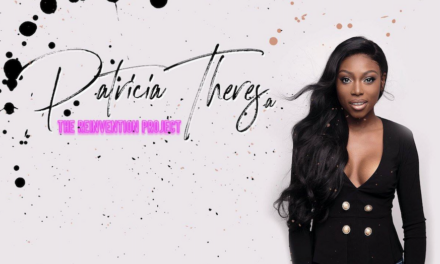
MARCH 8, 2024
5 things to do
Unlock a Keyword Strategy
As a content entrepreneur, you want the audience to find your content.
Search engines can help surface that content. For that to happen, you should adopt a keyword strategy for your content. Then, you can help search engines understand your content, who it’s for, and why it’s valuable for them.
To create a keyword strategy, start with these five things:
1. Know the types: Keywords fall into two types – individual and long tail. Individual keywords are one or two words generally relevant to the topic. “Books,” “writing,” and “Netflix” are general keywords.
Long-tail keywords usually answer a specific search query, such as “Where do I buy books online that aren’t Amazon?” or “How do I log into my Netflix account?”
2. Understand who your search audience is: You’ve likely done some audience research to understand who your audience is and what they like. Now, determine who in that audience you’re speaking to through search engines and develop your keyword list. Are you targeting an audience just learning about your topic or people with advanced skills seeking a specific answer? Specificity in your audience is crucial to keyword discovery. What topics and questions does this audience have?
3. Discover relevant keywords: All the most popular SEO tools, like Ahrefs’ Keyword Generator, Answer The Public’s three free searches every day, and Moz’s Keyword Explorer, are free. Google Trends also offers free information about search behavior to help you see new and emerging trends.
But the best place to start is Google.com. Add a base or seed keyword you want to rank and hit enter to see a gold mine for keywords on the search engine results page (SERP).
TIP: Analyze keywords using the incognito or private mode so your internet activity doesn’t skew the results.
Scroll past the sponsored content until you reach the top organic results and (most importantly) the People-Also-Ask section. Like the embedded videos and images, People Also Ask is an invaluable SERP feature that helps you understand how users interact with the search engine.
Pay special attention to any terms or phrases you see often used in the titles, meta descriptions, questions asked, and other themes in the content that are relevant to your content tilt. You can also better understand search intent – why searchers seek the information.
4. Document your keyword discoveries: Here’s a simple Google Sheet to track what you have and will learn about your keywords.
At the top, I include these two components:
- Primary/seed keyword – a single word or short phrase that acts as the base for the longer list of keywords.
- Content goal – the goal/purpose of your content, usually tied to the primary keyword.
Then, I create columns for the keyword research. They include:
- Keyword – the primary keyword followed by 20 more keywords gleaned from your earlier research.
- Volume – approximate number of (monthly) searches for each keyword
- Difficulty – using a scale of zero to 100, how difficult will it be to rank for the keyword
- Cost per click – an indicator of how valuable and contested the keyword is
-
Intent – the educated guess of what intentions most searchers have when using the keyword, such as:
- Transactional: Searcher seeks to buy or sell.
- Informational: Searcher wants information or education.
- Navigational: Searcher looks for something more than the keyword.
- Relevance – relevancy of keyword to your goal and primary keyword (high, medium, low)
Several tools can be used to identify the volume, difficulty, and cost per click. Some offer paid versions that allow you to do more in one day, while most have free versions with workable limitations.
I use Semrush to do my research, but you can find similar information from some great free options:
- Moz – 10 keyword searches every month
- Ahrefs – Limited info about keywords
- Answer the Public – three searches every day
5. Evaluate your content competitors: This last step is easy. Return to Google or use Moz’s SERP analysis tool to see what content ranks for the 20 keywords you’re targeting. Then, consume that content.
Note the words used in their headings, as they often contain valuable keywords. Does the top content use a lot of images or feature lists? Are they in how-to formats or long, detailed explanations?
Look for common threads amongst the top-performing content and use that information to guide how you create your own.
Crafting a successful SEO strategy is a balancing act. You need enough targeted keywords in your content to get the attention of search engines, but you also must provide value to your readers. When you can do both, you’ll get more traffic to your site (thanks to search engines) and grow your audience because what you create genuinely delights them.
– Paul Hobday
Helpful Resources:
- SEO for Writers: A Deep Dive Into Keyword Research and Analysis
- SEO Tips for Creators
- SEO for Authors: How To Optimize Your Website for Better Rankings (video)
tilt publishing book club
Austin L. Church is the founder of Freelance Cake. He published Free Money: Nine Counterintuitive Moves for Life-Changing Freelance Income in February. He also will be speaking at #CEX24.
Why this book?
I’ve coached other freelancers and consultants since 2018, and the open conversations about pricing and money always resonated deeply. That surprised me because I used to consider myself a money moron. Much of what I’ve learned, I’ve learned on the other side of painful mistakes.
That said, my process has proven effective in helping people set smart, strategic, and sustainable prices they’re confident in. Putting that process in the container of a book started to make more and more sense, and before I knew it, I was writing it.
Who is the audience?
Creatives, consultants, coaches, and other freelancers who want to charge what they’re worth
Your creation process?
My process was a rat’s nest of outlines, blog posts, email newsletters, and an epic Twitter thread I created after deciding to write the book in public in 100 days. I started with an outline in May 2021. Later, I read Rob Fitzpatrick’s book Write Useful Books and invited beta readers to review the outline. I made some changes and started writing chunks of the book, only to realize that the book was too big.
I kind of stalled out in early 2022 until a couple of friends encouraged me to try writing it in public. I started that process in July 2022 and finished the manuscript. In early 2023, I hired a developmental editor to help me turn the manuscript into something resembling a book. In fall 2023, I hired a line editor to help me clean up the book line by line.
Marketing?
The easiest and best marketing I did was simply inviting people into the process (giving opinions on the book cover). I talk about it often in my newsletter and on my socials (primarily LinkedIn), but my primary strategy is putting the book’s message (more than the book itself) in front of 46 new audiences this year. Those audiences may be other people’s newsletters, podcasts, blogs, etc.
A month after launch?
I felt pleased to have finally finished the dang thing. I sold some books. I started marketing books in earnest. I optimized my Amazon author profile. I had to keep reminding myself that marketing is a 12-month marathon, not a sprint.
Tips for authors in progress?
Remember, you don’t know what the book will become. Don’t fall into the trap of editing for quality until you know that part of the manuscript will survive all the cuts you make. I wasted months editing bits and pieces before I had clarity on what the book needed to be. Write for that discovery first. Edit for quality second.
Realize that there’s a difference between the book you want to write and the book people will want to read. Ultimately, you have to decide which is more important to you and write that one.
Imagine the difference your book can make in people’s lives. Imagine how it can change readers and make their lives better. Let that vision pull you forward. Let love for your readers pull you forward instead of letting the need to prove you’re smart or to share your message drive you.
5 things from the tilt
- Rebranding hits this week’s Tilt Your Business: A Weekly Mastermind for Content Entrepreneurs. See you at 12 p.m. US EDT Tuesday.
- A special (longer) episode dedicated to how an author (or content creator) can build a successful content business with a book at the core. (Content Inc.)
- Joe and Robert discuss the 12 secrets to content marketing success. (This Old Marketing)
- In this episode, Lauren and Matt discuss Kevin Kelly’s 1,000 True Fans theory. (Publish & Prosper)
- ICYMI Paid Sponsorships: Build a Better Negotiating Table
5 things to know
Money
-
Pay time: TikTok creators with non-livestream content can soon offer subscription packages. The feature has only been available for live creators. [Search Engine Land]
Tilt Take: Subscriptions are a smart option because they’re recurring revenue sources. -
No free gifts: Influencer gifting is declining in popularity. So successful brands ask before they send a gift package in hopes of attracting social coverage from a creator. [Marketing Brew]
Tilt Take: Targeted gifting allows the development of a niche audience that is often more valuable.
Audiences
-
Visual silence: Music does well on video channels like YouTube and TikTok. Yet, podcasts tend to lack the “vibrant interplay of music and content creation.” That’s a missed opportunity in content and revenue. [Sounds Profitable]
Tilt Take: Audio-only podcasters should consider the potential of going bigger in their content creation.
Tech and Tools
-
Watch out: On May 5, Google’s algorithm will consider low-value, third-party content published on a site primarily for ranking purposes without close oversight of the website owner to be spam. [Google Blog]
Tilt Take: Users of low-quality, third-party syndicated content should pay attention.
And Finally
-
News boost: LinkedIn’s newsletter numbers have jumped 150% on the platform in the past year. [Axios]
Tilt Take: A LinkedIn newsletter strategy should also have a component to drive people to the email version.
Get more of the Full Tilt stories on TheTilt.com.
Know a content creator who’s going full tilt? DM us or email [email protected].
Want to advertise on The Tilt? Go here.
Or email us at [email protected].
Was this email forwarded to you? Get your own sub here.
Copyright ©2024 Lulu Press, Inc. All rights reserved.
Update your preferences | Unsubscribe | 700 Park Offices Dr., Suite 250, Durham, NC 27709





